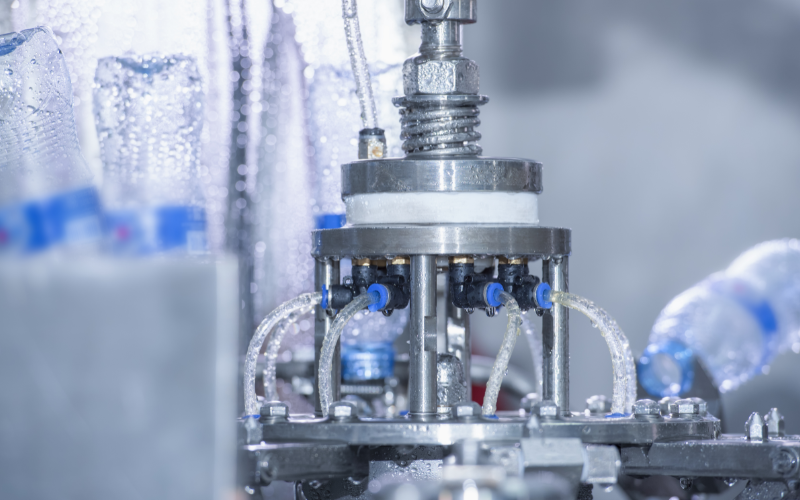Solvent recovery is a critical step in the extraction process, particularly within the chemical, pharmaceutical, and food industries. By reclaiming and reusing solvents, companies can reduce operational costs, minimise environmental impact, and enhance overall efficiency. However, solvent recovery also significantly impacts filtration methods, necessitating careful consideration and optimisation. This article explores how solvent recovery in the extraction process affects filtration methods and highlights common errors to avoid.
Understanding Solvent Recovery in the Extraction Process
Solvent recovery involves reclaiming solvents used in extraction processes to be reused rather than disposing of them. This is achieved through various techniques, including distillation, evaporation, and membrane separation. Each method has unique advantages and challenges, and the choice of technique depends on the solvent’s properties and the desired purity level.
The primary goal of solvent recovery is to reduce waste and operational costs. By reusing solvents, companies can lower the volume of fresh solvents needed, reducing procurement costs. Additionally, solvent recovery mitigates the environmental impact associated with solvent disposal, aligning with sustainability goals.
Solvent Recovery and Its Impact on Filtration Methods
The effectiveness of solvent recovery directly influences the performance of filtration systems. Filtration is a crucial step in the extraction process, used to separate solid particles from liquids. The efficiency of this process can be affected by the quality and purity of the recovered solvent.
Solvent Quality and Filtration Efficiency:
The quality of recovered solvents plays a significant role in the efficiency of the solvent filtration system. Impurities or residual contaminants in the recovered solvent can clog filtration membranes, reducing their lifespan and effectiveness. This necessitates regular monitoring and maintenance of the filtration system to ensure optimal performance.
Compatibility of Solvents with Filtration Materials:
Not all solvents are compatible with all filtration materials. The choice of filtration membrane or material must be compatible with the solvent used. Incompatible materials can lead to degradation or reduced filtration efficiency, affecting the extraction process.
ALSO READ: A Comprehensive Guide to Nanofiltration Membranes
Temperature and Pressure Considerations:
Solvent recovery processes often involve changes in temperature and pressure. These changes can impact the performance of filtration systems. For instance, high temperatures can cause certain filtration materials to degrade, while pressure fluctuations can affect the flow rate and efficiency of filtration.
Common Errors to Avoid in Solvent Recovery and Filtration
Implementing solvent recovery and filtration processes comes with its own set of challenges. Here are some common errors to avoid:
Neglecting Solvent Purity:
Failing to adequately purify recovered solvents can lead to contamination of the entire extraction process. It is essential to implement rigorous purification steps to remove impurities and ensure the solvent’s quality.
Inadequate Maintenance of Filtration Systems:
Regular maintenance of the solvent filtration system is crucial for optimal performance. Neglecting maintenance can lead to clogging, reduced efficiency, and system failure. Scheduled maintenance routines and frequent inspections are necessary to prevent such issues.
Incorrect Choice of Filtration Materials:
Using incompatible filtration materials can compromise the efficiency of the solvent recovery process. It is vital to select materials that are chemically resistant to the solvent being used, ensuring longevity and effectiveness.
Ignoring Temperature and Pressure Effects:
Temperature and pressure variations can significantly impact filtration performance. It is important to monitor and control these parameters to maintain consistent filtration efficiency. Failure to do so can result in decreased performance and potential damage to the filtration system.
Optimising Filtration Methods for Effective Solvent Recovery
It is essential to optimise filtration methods to ensure the success of solvent recovery in the extraction process. Here are some strategies:
Regular Monitoring and Quality Control:
Implementing stringent quality control measures and regular monitoring of recovered solvents can help identify and address impurities early. It ensures that only high-quality solvents are reused in the extraction process.
Selecting Appropriate Filtration Technologies:
Choosing the right filtration technology is crucial. Technologies such as membrane filtration, activated carbon filtration, and centrifugal filtration offer different benefits and should be selected based on the specific requirements of the extraction process.
Adapting to Process Changes:
Extraction processes may evolve, necessitating adjustments to the filtration system. It is important to remain flexible and adapt filtration methods to accommodate changes in solvent types, temperatures, and pressures.
Conclusion
The interplay between solvent recovery and filtration methods is complex yet vital for the efficiency and sustainability of extraction processes. Companies can enhance their operations, reduce costs, and minimise environmental impact by understanding how solvent recovery affects filtration and avoiding common errors.
For expert advice and advanced solutions in solvent recovery in the extraction process, visit SepPure. Enhance your filtration methods and ensure optimal performance with our comprehensive range of services and products.




